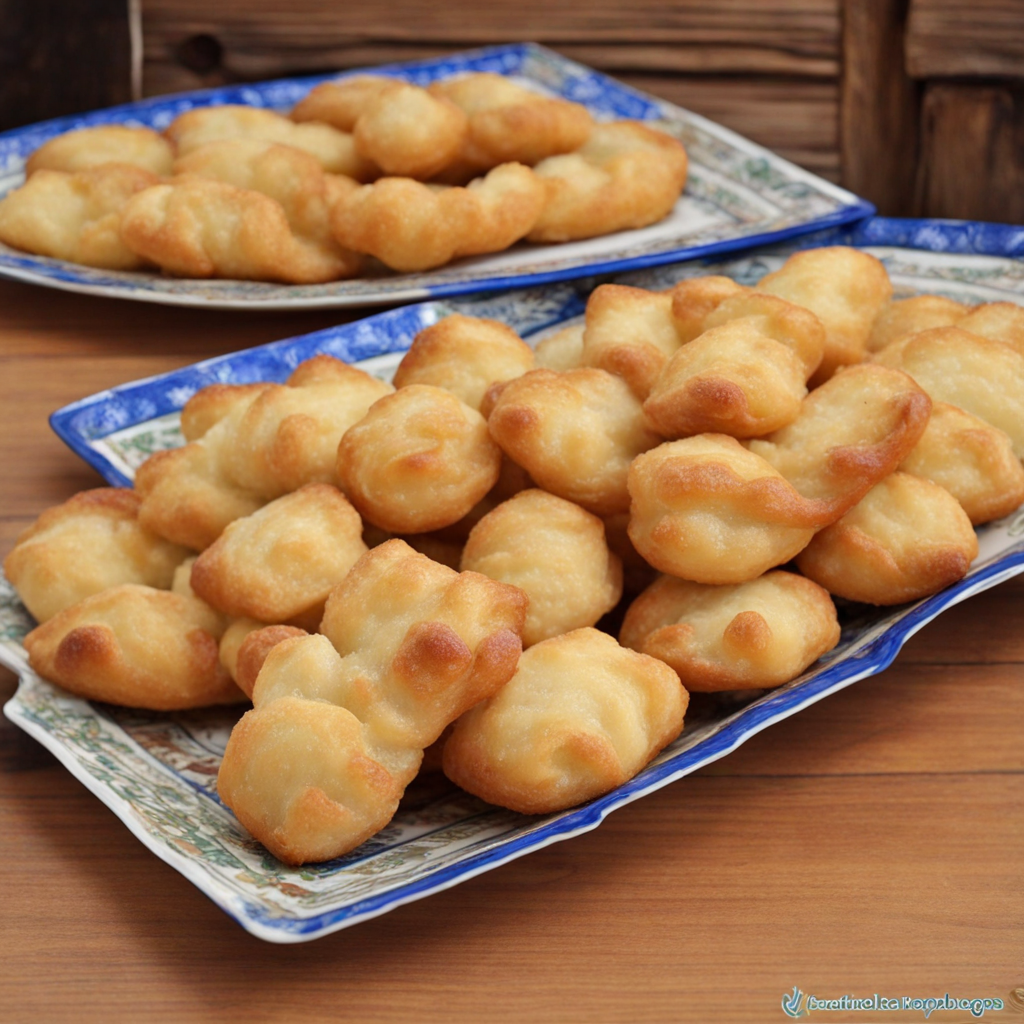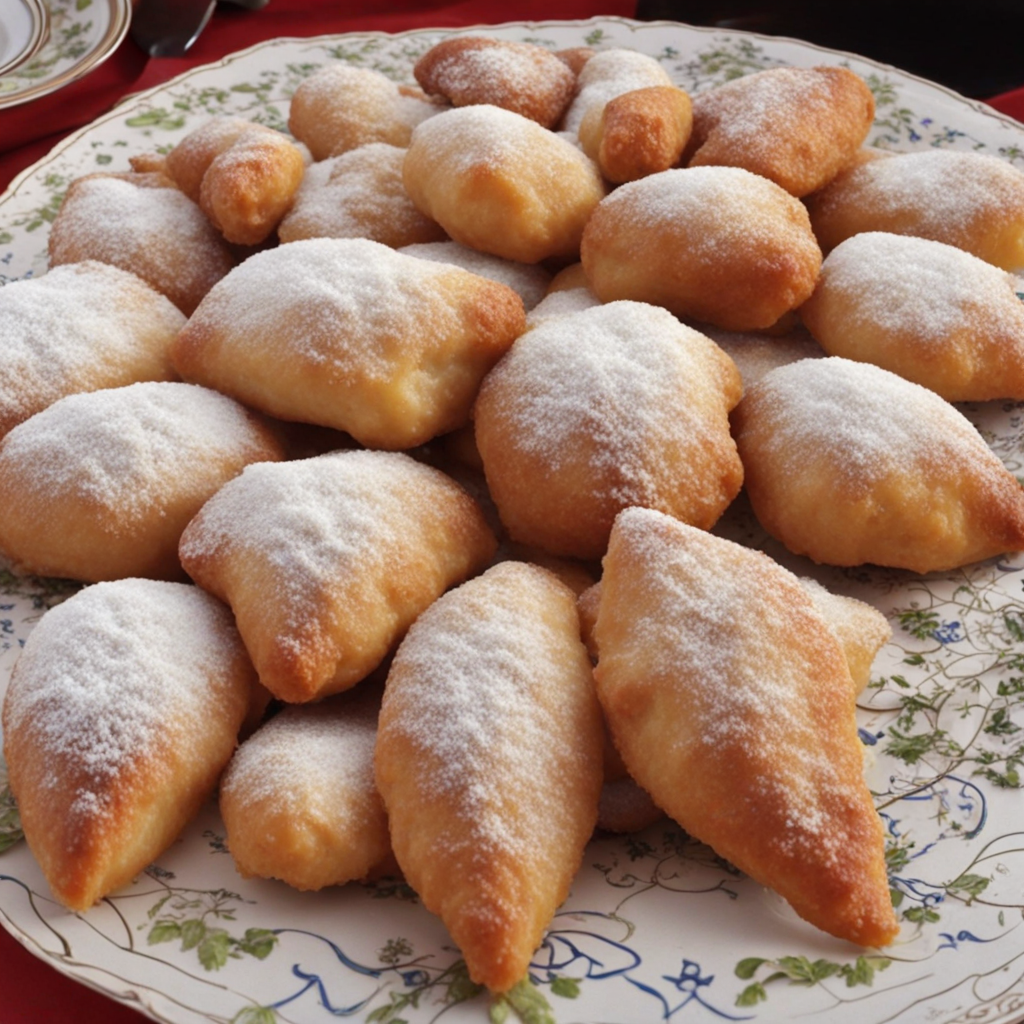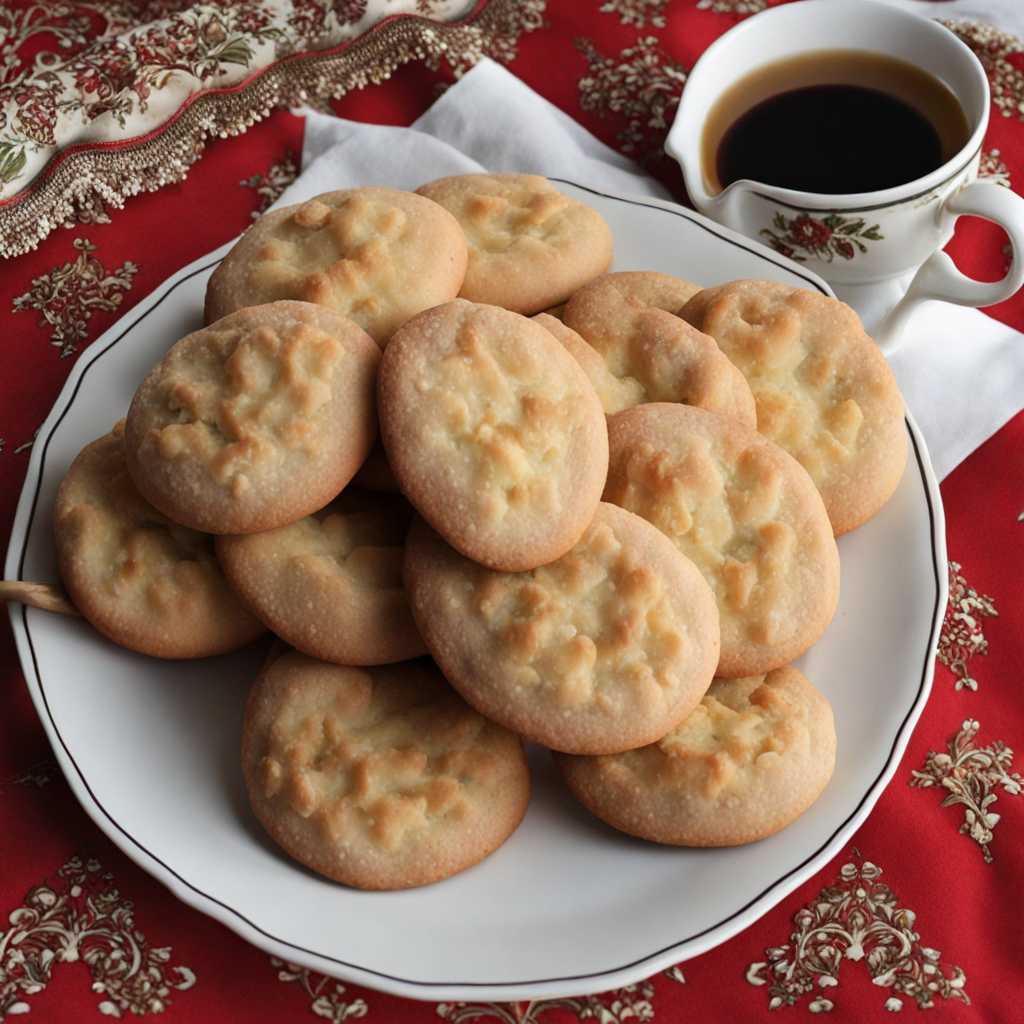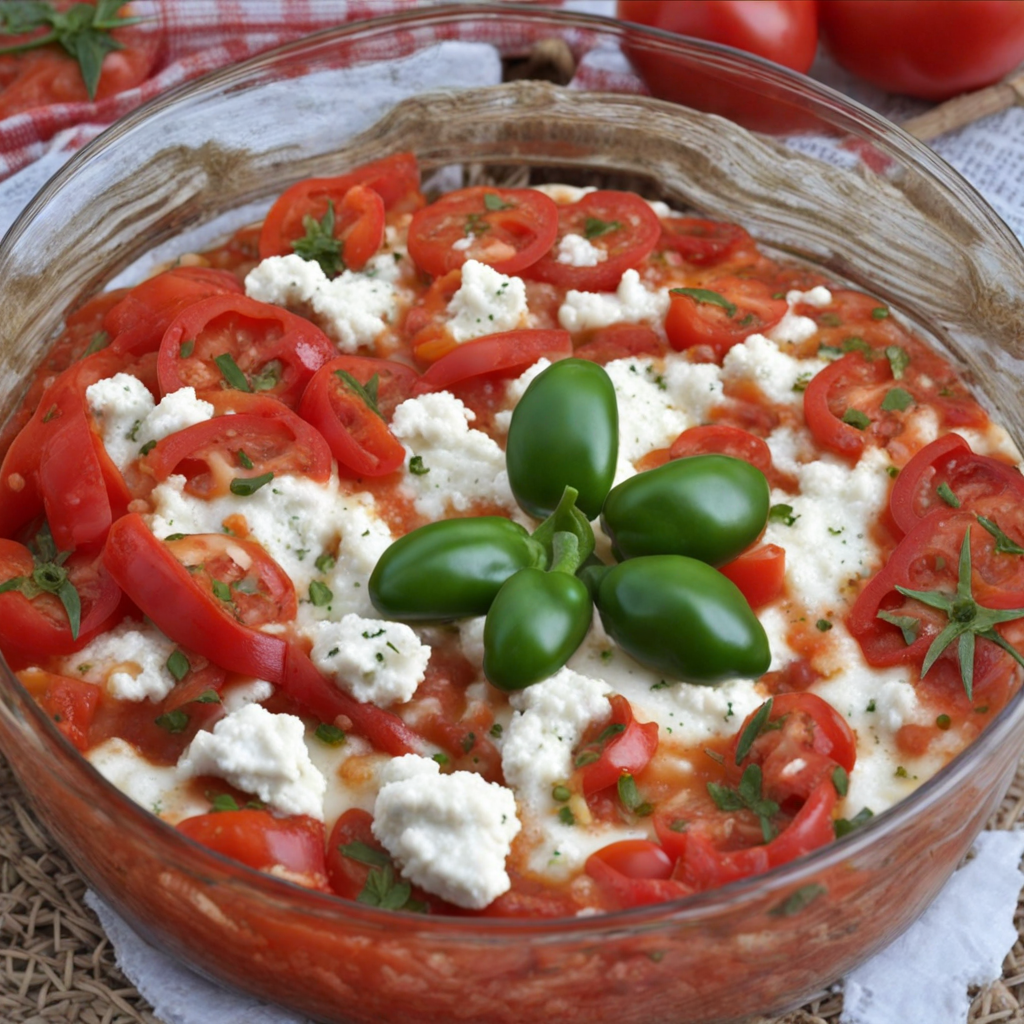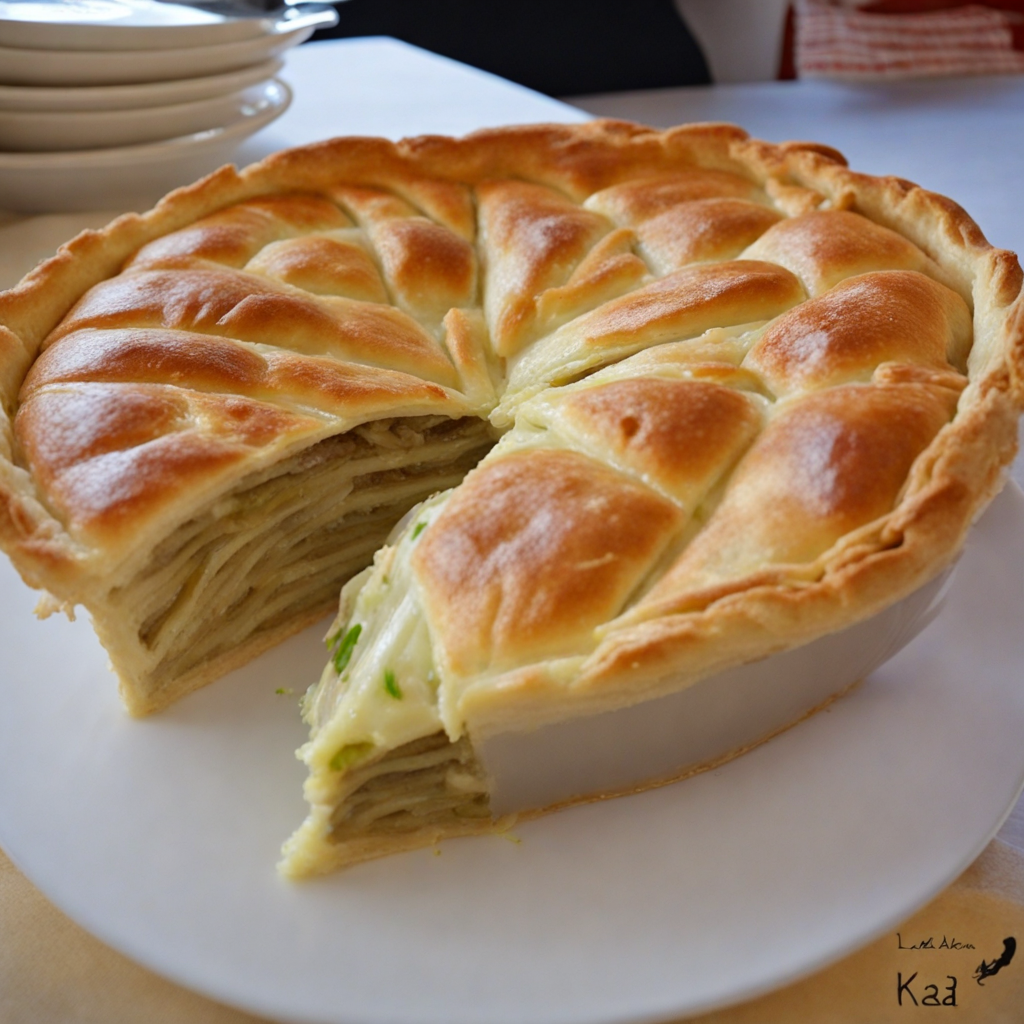Petulla
Petulla is a delightful Albanian treat that showcases the simplicity and richness of traditional Balkan cuisine. These fluffy, deep-fried doughnuts are made from a straightforward mixture of flour, water, yeast, and a pinch of salt, resulting in a light and airy texture that is irresistibly comforting. The dough is typically allowed to rise before being shaped into small circles or flat disks, which are then gently fried until golden brown. The exterior becomes crispy, while the interior remains soft and pillowy, creating a delightful contrast in each bite. Often enjoyed as a snack or dessert, Petulla can be served in various ways to suit different palates. Some people prefer them dusted with powdered sugar or drizzled with honey, enhancing their sweetness and making them a perfect accompaniment to a cup of coffee or tea. Others might opt for a savory version, filling them with ingredients like cheese or herbs, which adds a delightful complexity to their flavor profile. This versatility makes Petulla a popular choice for gatherings and celebrations, where they are often shared among family and friends. The experience of tasting Petulla transcends mere flavor; it evokes a sense of nostalgia and warmth, reminiscent of family kitchens where generations have lovingly prepared this dish. The aroma of frying dough wafting through the air is enough to draw anyone in, promising a comforting treat that is both satisfying and memorable. Whether you enjoy them sweet or savory, Petulla offers a unique glimpse into Albanian culinary traditions, making it a must-try for anyone seeking to explore new and exciting flavors.
How It Became This Dish
Petulla: A Delicious Journey Through Albanian Culinary Heritage #### Origins of Petulla Petulla, a beloved traditional dish from Albania, embodies much of the country’s rich culinary heritage. These fluffy, fried dough balls are similar to doughnuts but often take on savory and sweet flavors, making them versatile and beloved across various occasions. The name "petulla" is derived from the Albanian word for "pancake," reflecting its roots in simple, peasant-style cooking. Petulla has its origins in the agricultural traditions of Albania, where home cooks would use readily available ingredients—flour, water, salt, and yeast. These staples were often the only resources available in rural households, especially during times when food scarcity was a reality. The dish likely emerged as a means of using leftover dough or as a quick meal to sustain farmers and laborers working in the fields. #### Cultural Significance Petulla is not just a dish; it is a cultural symbol that represents Albanian hospitality and communal bonding. In many households, petulla is served during family gatherings, celebrations, and holidays. It is common to see them during festive occasions such as weddings, religious holidays, and when welcoming guests. The act of making petulla often becomes a communal activity where families come together to prepare the dough, fry it, and share stories, laughter, and life experiences. The dish also carries a sense of nostalgia and tradition. For many Albanians, petulla invokes memories of childhood, where the aroma of frying dough would waft through the house, signaling a special time of togetherness. This culinary practice has been handed down through generations, with each family adding its unique twist—some opt for sweet versions with honey or sugar, while others prefer savory fillings like cheese or herbs. #### Development Over Time As Albania transitioned through various historical phases—from the Ottoman Empire to communism—the preparation and consumption of petulla evolved. Under Ottoman influence, many culinary practices were introduced to Albanian kitchens, including the technique of frying dough, which became a common method of cooking across the region. The Ottoman legacy can still be tasted in the layers of flavor present in petulla, as spices and herbs were gradually incorporated into the dish. During the communist era in Albania, traditional foods like petulla were often prioritized over imported or modern dishes. The government emphasized agriculture and self-sufficiency, leading to an increased focus on local ingredients. Petulla, made from simple and accessible components, thrived in this environment. It became a staple food among the working class, providing nourishment and comfort during difficult times. With the fall of communism in the early 1990s, Albania underwent significant socio-economic changes. Globalization began to influence local cuisine, introducing new cooking methods and ingredients. However, the resilience of traditional foods like petulla kept them firmly rooted in the Albanian culinary landscape. As the country opened up to the world, many Albanians began to explore international cuisines, but petulla remained a cherished dish, often featured in restaurants and homes alike. #### Varieties and Regional Specialties Petulla can differ significantly from one region to another, showcasing the diversity of Albanian culinary practices. In the coastal areas, for instance, you might find petulla stuffed with fresh seafood, reflecting the local fishing culture. In the mountainous regions, they may be prepared with rustic, hearty fillings like potatoes or seasonal greens. Moreover, the method of preparation can vary. While the classic petulla is simply fried, some modern interpretations involve baking or air-frying, catering to contemporary dietary preferences and health consciousness. Sweet versions often include ingredients like chocolate, nuts, or fruit, appealing to the evolving tastes of younger generations. #### Modern Revival In recent years, there has been a revival of interest in traditional Albanian cuisine, spurred by a growing culinary tourism industry. Chefs and food enthusiasts have begun to explore and reinterpret classic dishes, including petulla, infusing them with modern flair while retaining their traditional roots. This renaissance highlights not only the versatility of petulla but also its ability to adapt to contemporary tastes and dietary trends. Culinary events, food festivals, and cooking classes centered around Albanian cuisine have further popularized petulla. Social media has played a significant role in showcasing this dish, with food bloggers and influencers sharing recipes and personal stories tied to petulla, thus reaching a wider audience both within Albania and among the Albanian diaspora. #### Conclusion Petulla is more than a mere food item; it is a testament to the resilience and adaptability of Albanian culture. From its humble beginnings in rural kitchens to its place at the center of family gatherings and celebrations, petulla continues to symbolize community, hospitality, and tradition. As Albania moves forward, this cherished dish serves as a reminder of its rich history, embodying the flavors, stories, and shared experiences that define the Albanian identity. Whether served sweet or savory, petulla invites everyone to partake in a culinary experience that transcends time and place, bringing people together around the table and celebrating the enduring legacy of Albanian cuisine. Through each bite, one can savor the past, present, and future of a dish that holds a special place in the hearts of many.
You may like
Discover local flavors from Albania


